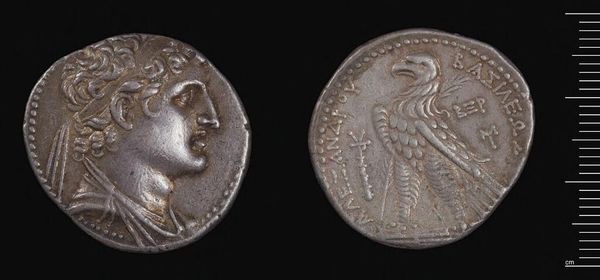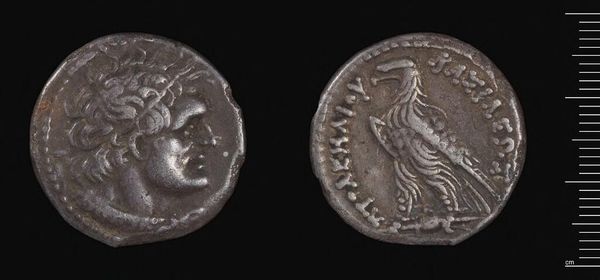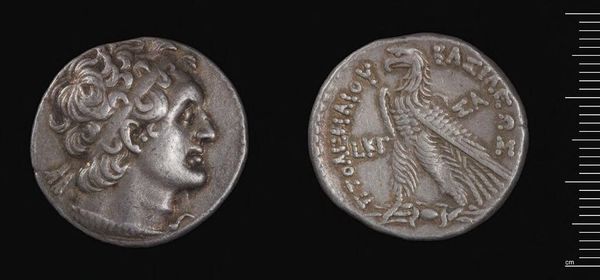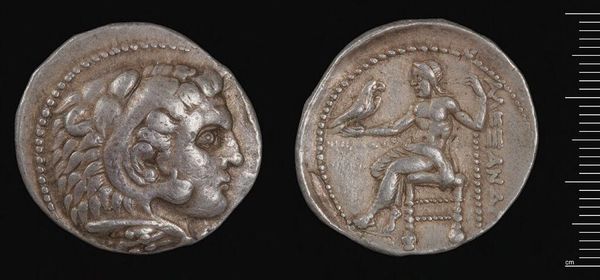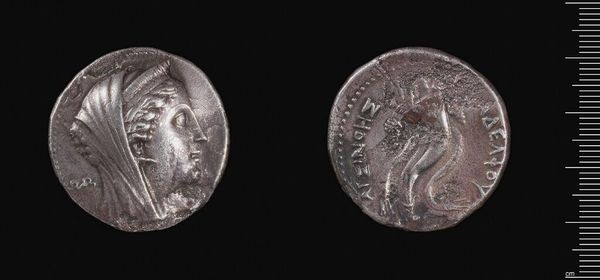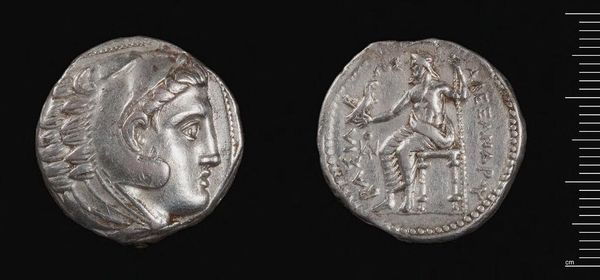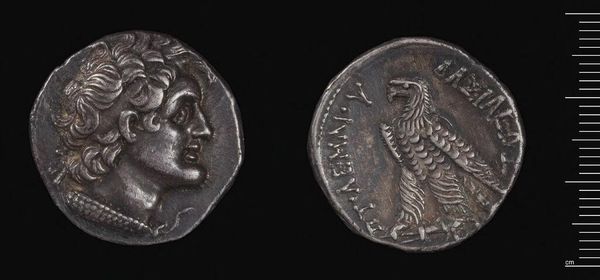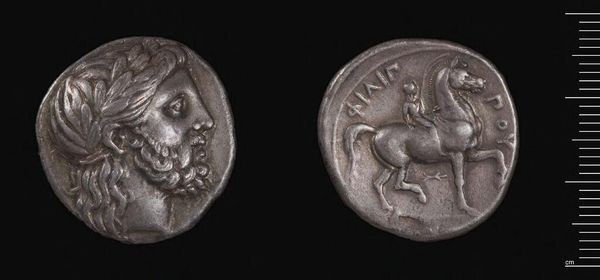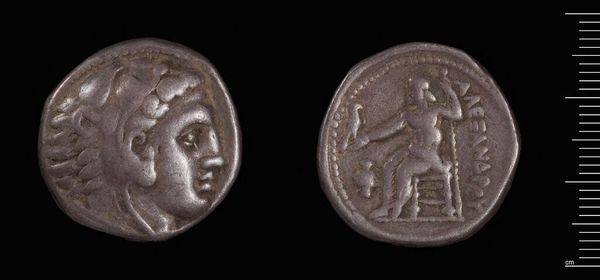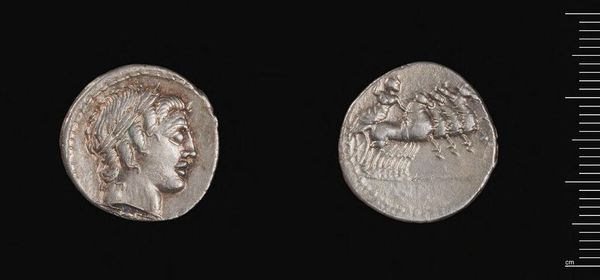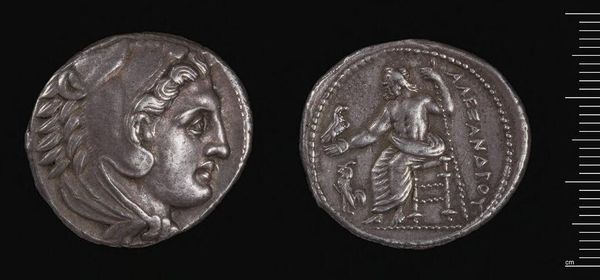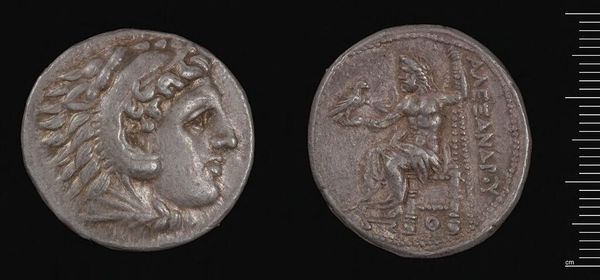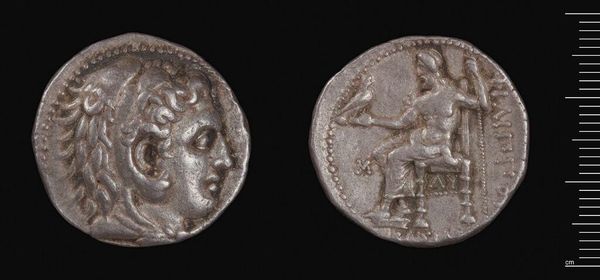
Tetradrachm of Philip II of Macedonia, Amphipolis (forgery?) c. 323
0:00
0:00
Dimensions: 14.27 g
Copyright: CC0 1.0
Curator: Here we have a silver tetradrachm, potentially a forgery, attributed to Philip II of Macedonia. Editor: It feels… worn, doesn't it? The figures are a little blurry, like a dream half-remembered. Curator: Precisely. The coin's authenticity is debated. It depicts a laurel-wreathed Zeus on one side. This imagery on coinage served to bolster his legitimacy. Editor: And the horse and rider on the other side? There's a real sense of motion, like they're galloping right out of the coin. Or trying to escape? Curator: It illustrates Philip’s equestrian prowess and the significance of cavalry in his military campaigns. Coinage like this was a powerful tool for disseminating propaganda. Editor: So, even a tiny coin could carry the weight of an empire's ambitions. I find that strangely beautiful. Curator: Indeed. It is a tangible piece of history, regardless of whether it’s genuine or a clever imitation.
Comments
No comments
Be the first to comment and join the conversation on the ultimate creative platform.
